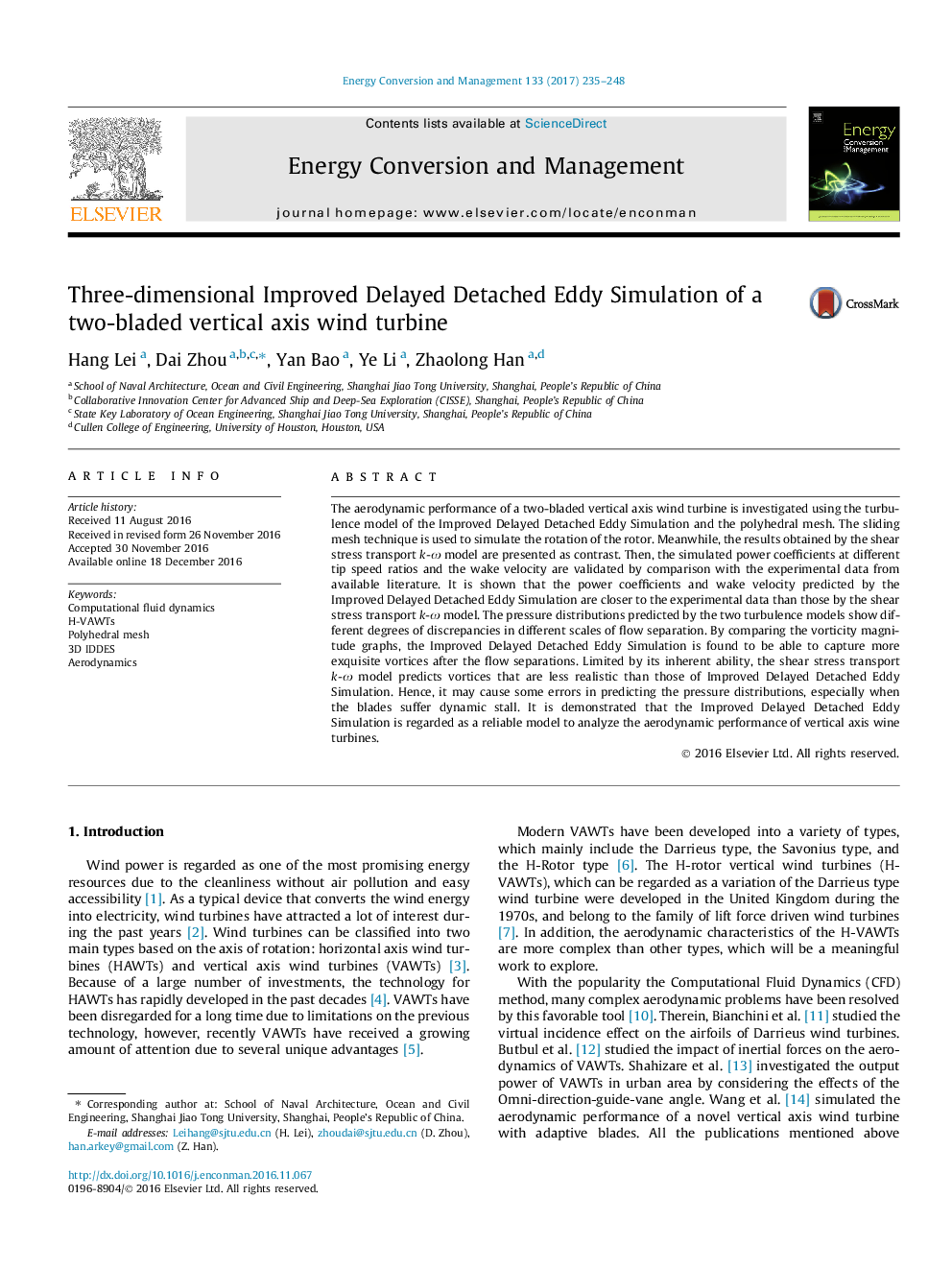| Article ID | Journal | Published Year | Pages | File Type |
|---|---|---|---|---|
| 5013019 | Energy Conversion and Management | 2017 | 14 Pages |
Abstract
The aerodynamic performance of a two-bladed vertical axis wind turbine is investigated using the turbulence model of the Improved Delayed Detached Eddy Simulation and the polyhedral mesh. The sliding mesh technique is used to simulate the rotation of the rotor. Meanwhile, the results obtained by the shear stress transport k-Ï model are presented as contrast. Then, the simulated power coefficients at different tip speed ratios and the wake velocity are validated by comparison with the experimental data from available literature. It is shown that the power coefficients and wake velocity predicted by the Improved Delayed Detached Eddy Simulation are closer to the experimental data than those by the shear stress transport k-Ï model. The pressure distributions predicted by the two turbulence models show different degrees of discrepancies in different scales of flow separation. By comparing the vorticity magnitude graphs, the Improved Delayed Detached Eddy Simulation is found to be able to capture more exquisite vortices after the flow separations. Limited by its inherent ability, the shear stress transport k-Ï model predicts vortices that are less realistic than those of Improved Delayed Detached Eddy Simulation. Hence, it may cause some errors in predicting the pressure distributions, especially when the blades suffer dynamic stall. It is demonstrated that the Improved Delayed Detached Eddy Simulation is regarded as a reliable model to analyze the aerodynamic performance of vertical axis wine turbines.
Related Topics
Physical Sciences and Engineering
Energy
Energy (General)
Authors
Hang Lei, Dai Zhou, Yan Bao, Ye Li, Zhaolong Han,
